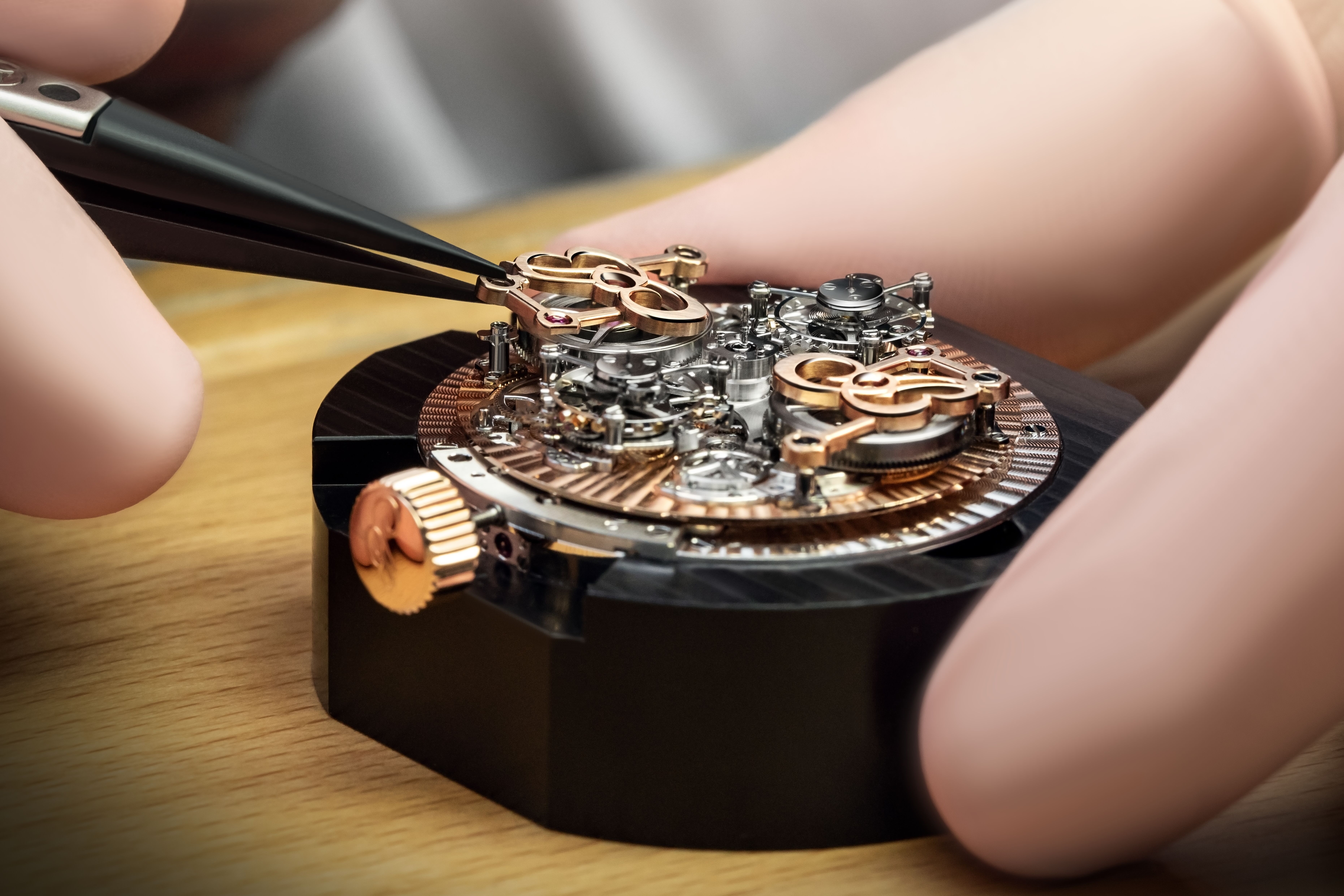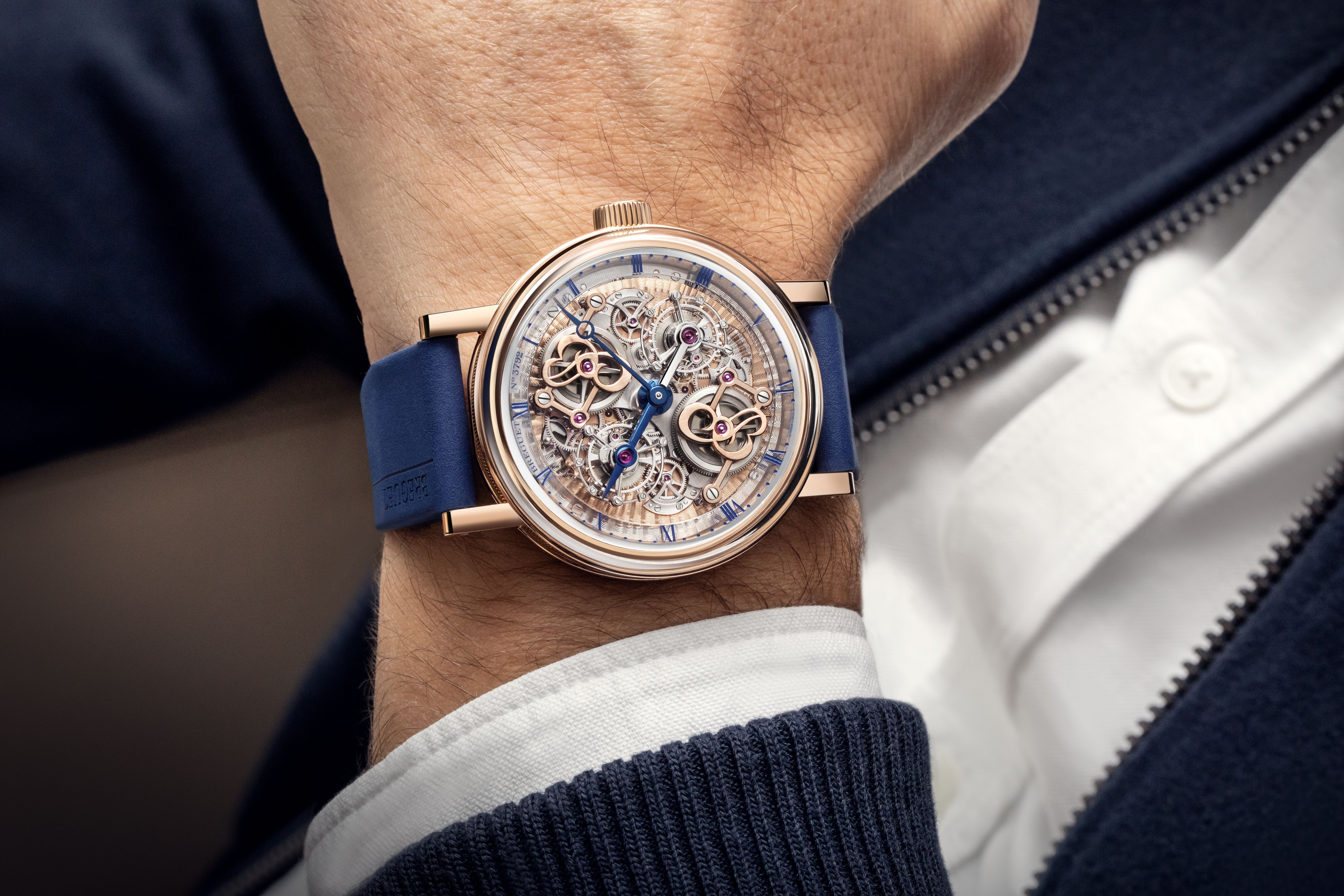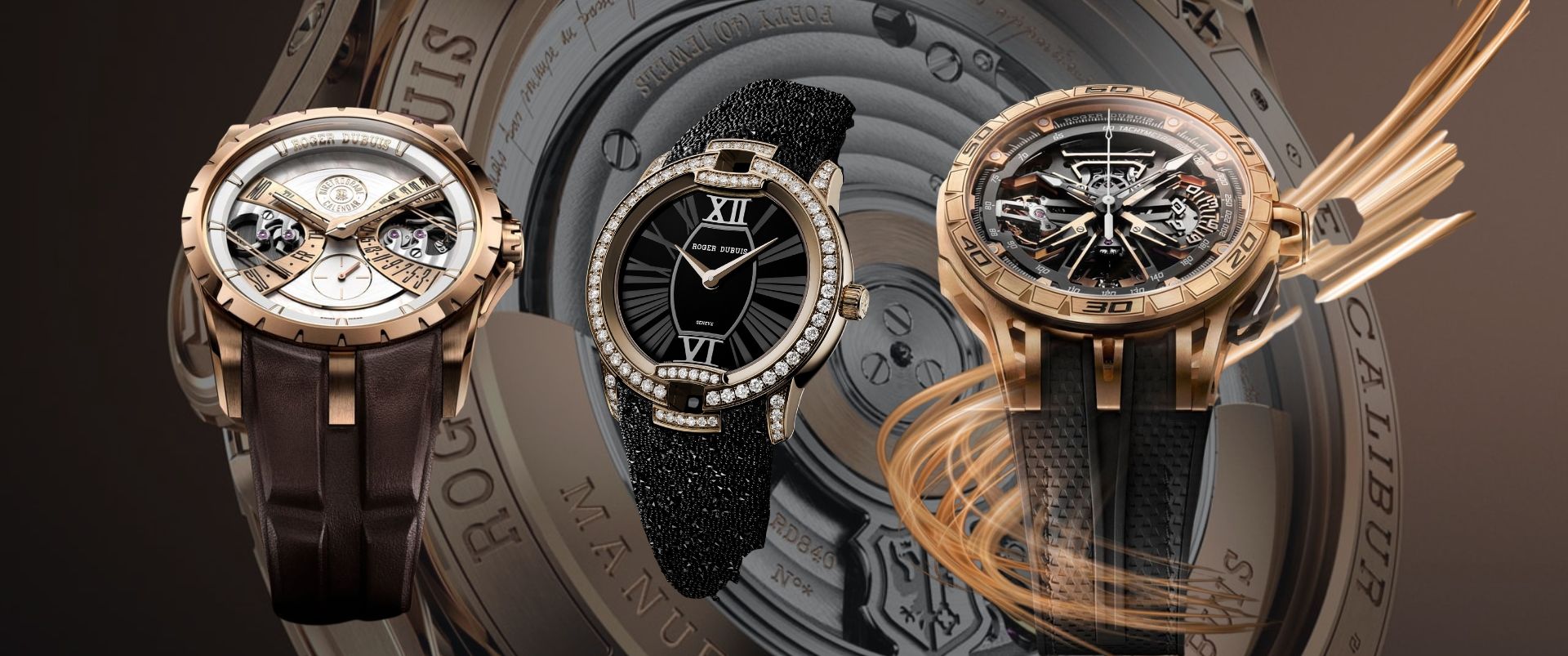Twin Tourbillons Grace Breguet’s New “Quai de l'Horloge” In An Ode To Its Founder’s Vision
Complex and artistic, the new Classique Double Tourbillon
Housed within the case is the sheer complexity of the 588N2 movement and its 740 components, in a rose gold case measuring 46 mm in diameter and 16.8 mm thick, leaving one perplexed at how minute each part might be. This masterpiece fascinates with the ingenuity of its mechanism. Viewing the watch from the dial reveals the double tourbillion an integral part of the time display. The bar of these two tourbillons is attached to a central mainplate rotating every 12 hours thanks to a particularly complex mechanism. The designers were naturally able to attribute an additional function to this component by transforming it into an hours hand in the brand's characteristic style.

Each equipped with its own gear train powered by its own barrel, the two tourbillons independently make one full turn per minute. The two mechanisms are connected to a central differential regulating the rate of the watch and, via a third gear train, driving the rotation of the entire mechanism. Celebrated for its Guilloché work Breguet’s atelier is dedicated to this craft, creating an entirely new guilloché pattern for this timepiece: radiant flinqué. This is a motif visually reminiscent of regular sound waves and is applied to the rose gold rotating mainplate and to the rhodium-plated gold bridge below it. A true Breguet signature, guilloché work is an art perpetuated on almost 30 guilloché lathes, making it one of the most important such workshops in the entire watch industry.

More than a hundred hours were needed to create the engraving on the back of the movement. The intricacy of the engraved details is an invitation to focus on the place where the Breguet brand was born. Hand-engraved by the Manufacture's artisans, the depiction features an aerial view of Abraham-Louis Breguet's workshop at 39 Quai de l'Horloge. Various techniques were used to create perspective effects on a gold plate, notably including bas-relief engraving that involves hollowing out the material. The tracing tip was used to create fine lines on the asphalt, while grey contrasts were created using black and white rhodium. These colours are also found in the galvanic treatment used to coat the bridges.

At Breguet, every tiny part of the movement, even those that are invisible, is chamfered and polished. Also known as bevelling, chamfering is a complex process that has been raised to an art form by Breguet. This technique, requiring great dexterity, consists in filing down the sharp edges of the various components, highlighting their outline while creating luminous shimmering effects. The new double tourbillon is no exception to the rule. A multitude of interior and exterior angles have been crafted by hand. A true token of Haute Horlogerie excellence involving over 100 hours of work on this mechanism, this method offers a pure and distinctive aesthetic finish demonstrating a precision that no machine can currently match.

The sapphire dial is equally impressive, bearing Roman numerals and an engraved minutes track. A blue varnish has been applied to these interstices, creating the impression of the chapter ring being suspended above the mechanism. The vertical flank of the caseband is engraved with 12 Roman numeral hour-markers. These are then coated with black varnish, representing the shadow of the chapter ring numerals. The timepiece is paired with a Breguet-embossed midnight blue ruber strap that sits comfortably on the wrist.
Reflecting on this masterpiece, CEO Lionel a Marca sums it up nicely, “The dominant factor lies in the art of horological beauty, the technical skill behind it, as well as the fascination. Observing a tourbillon in action is like watching a heartbeat. What's more, a timepiece is an object of desire, and our aim is to continue to intrigue people as well as make them dream – isn’t that a nice challenge?"
No articles found





